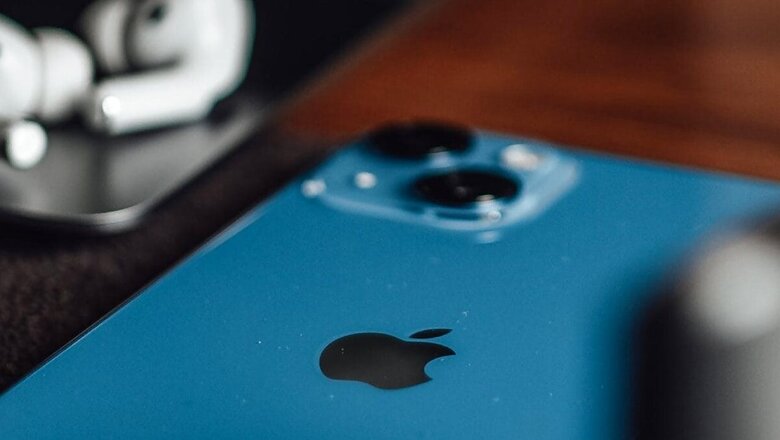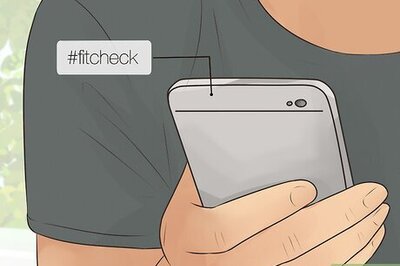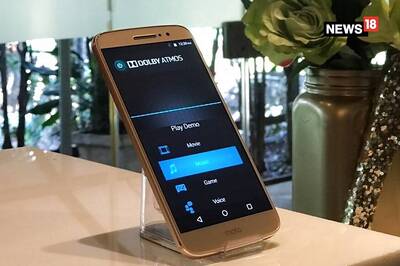
views
Toronto-based Rupnisha got an iPhone 13 for her younger brother last year while visiting her family in New Delhi. She was coming back home for a short visit after completing her course in Canada. Her young brother, pursuing his graduation in New Delhi, was thrilled to get an iPhone 13 while her parents were happy with chocolates and winter jackets from Canada. Barely a year after her visit, she gets a dreaded phone call from a close relative while leaving for work in Toronto– her brother passed away in a bike accident.
Her family went into shock and wanted her home as soon as possible to support her dad during this tough time. Without any delays she gets back to Delhi to uncover another trauma while consoling her family: no one knows how to unlock her brother’s iPhone 13 that she gifted. Contacts, photos, documents and more… The iPhone contains memories and last moments of her brother’s life. But what can she do?
The immediate thought that may come up is to visit the nearest local mobile shop to find a way to crack the passcode. But cracking the passcode of an iPhone running the latest iOS requires a lot of tech skills and access to tools that only government agencies can think of. And there’s no defined process to get hold of personal data of an Apple user through legal means in India. It’s a difficult job and at best what one can expect from an expert mobile technician is simply to reset the iPhone– which doesn’t solve the purpose.
What does Apple say officially with regards to accessing a deceased family member’s Apple account?
Apple does give the provision to “remove Activation Lock” from Apple devices like iPhone, iPad and iPod that are linked to the deceased family member’s Apple ID. However, Apple categorically states that the device will be automatically restored to factory settings. According to Apple, “…devices locked with a passcode are protected by passcode encryption, and Apple can’t help with removing the passcode lock without erasing the device.”
So, if you visit the Apple store, it may verify legal documentation of the family and the deceased member before resetting the iPhone. But what Rupnisha needs is not the “fresh” iPhone 13 that she gifted her brother but the precious memories in them. Her parents, like most Indian households, were stuck to old Nokia feature phones, so her brother’s iPhone has all the memories of family celebrations, festivals, birthdays and casual selfies well protected by a passcode that she simply can’t think of.
Can resetting the Apple iCloud account help?
If you have the iPhone and a working SIM card for OTP then resetting the iCloud account from the desktop seems like a workaround. However, one big issue is that you should be able to read the OTP message from the lock screen of the iPhone. In this case, while the iPhone kept buzzing, nothing could be accessed from the lock screen as the notifications were disabled when the iPhone is locked.
Having said that, it may come as a surprise but many first time iPhone users in India do not opt to use Apple iCloud at all. This is simply because the free 5GB storage space is too less and they do not want to pay a subscription fee. So, even if Rupnisha could somehow manage to reset the iCloud account, there isn’t much hope to see all the photos and videos in her brother’s iPhone.
Can You Unlock an iPhone When The Owner Dies?
Well, the good news is that Apple now has defined a way for users to hand over personal data. In any Apple device running iOS 15.2, iPadOS 15.2 and macOS 12.1 or higher, users have the option to add a “Legacy Contact for their Apple ID”. According to Apple, adding a legacy contact is the “most secure way to give someone they trust access to the data they stored in their Apple account after they pass away.”
The legacy contact will get an unique access key which can only be used after the user has passed away. The family member who is marked as the legacy contact will have to show the death certificate and unique access to request Apple to hand over the data.
How to add a Legacy contact on your iPhone, iPad or Mac?
- Go to Settings, then tap your name.
- Tap Sign-In & Security, then tap Legacy Contact
- Tap Add Legacy Contact. You may be asked to authenticate with Face ID, Touch ID or your device passcode.
- On Mac:
- Choose Apple menu > System Settings, then click Apple ID.
- Click Sign-In & Security, then click Legacy Contact.
- Click Add Legacy Contact. You may be asked to authenticate with Touch ID or your Mac login password.
The next aspect is to share the unique access key with the legacy contact. Note that no data can be accessed unless a death certificate is furnished, so users need not worry about privacy when they are alive.
If the family member already uses an Apple device then it’s pretty easy to share the legacy contact but thankfully Apple has also made the provision to share personal data to non-Apple users as well. In this case, the user will need to share a PDF file of the access key.
Note that Legacy contacts can be removed anytime from the settings menu.
The last option for family members is to request Apple to delete the Apple ID and all the personal data altogether by furnishing proper legal documents.
Process For Unlocking An iPhone When The User Dies
If the digital legacy contact is added, then the family member or friend who is designated as the legacy contact needs to reach out to Apple by visiting this website and follow the process while furnishing death certificate, unique access key and other relevant legal documents if required.

















Comments
0 comment